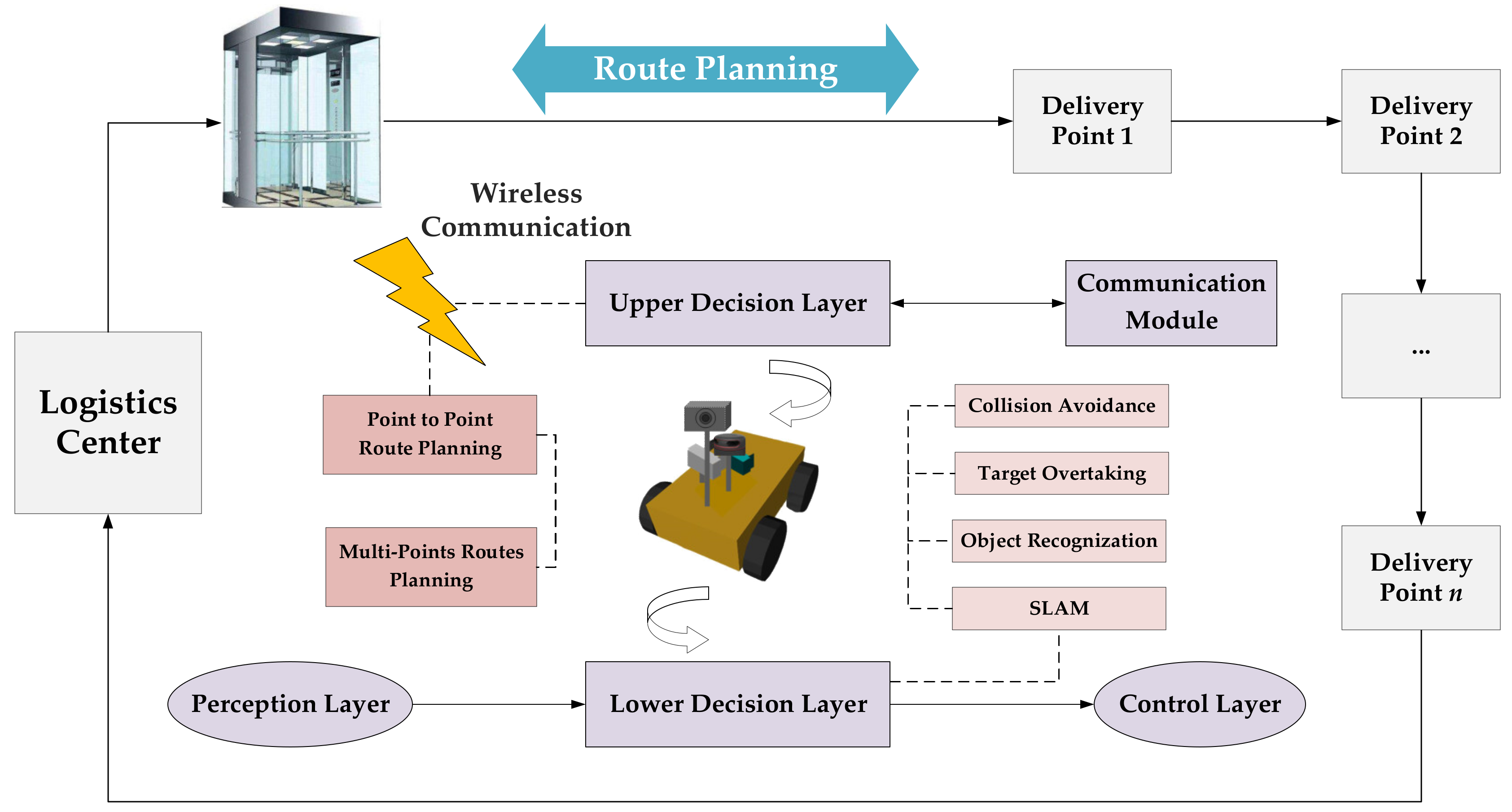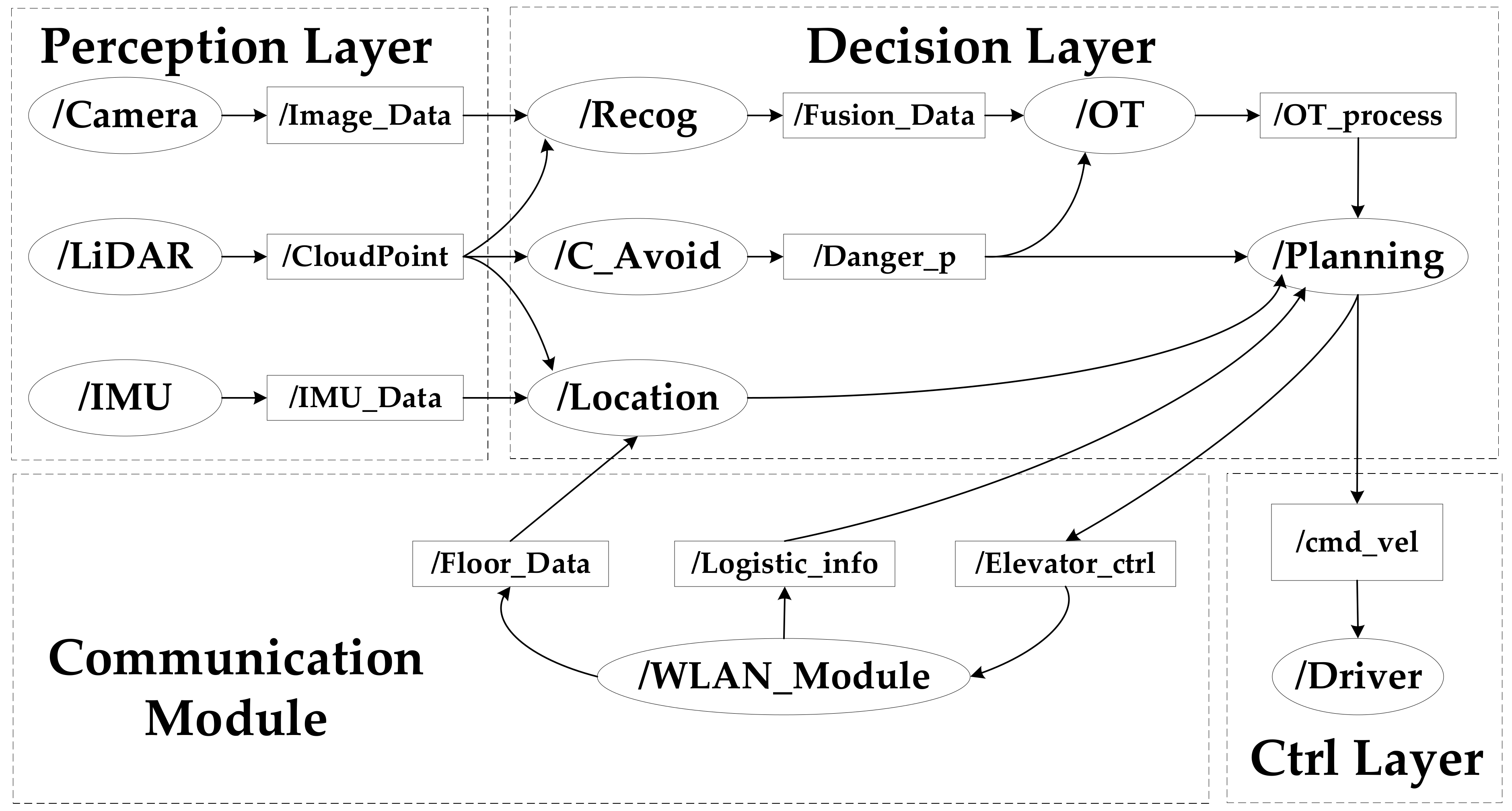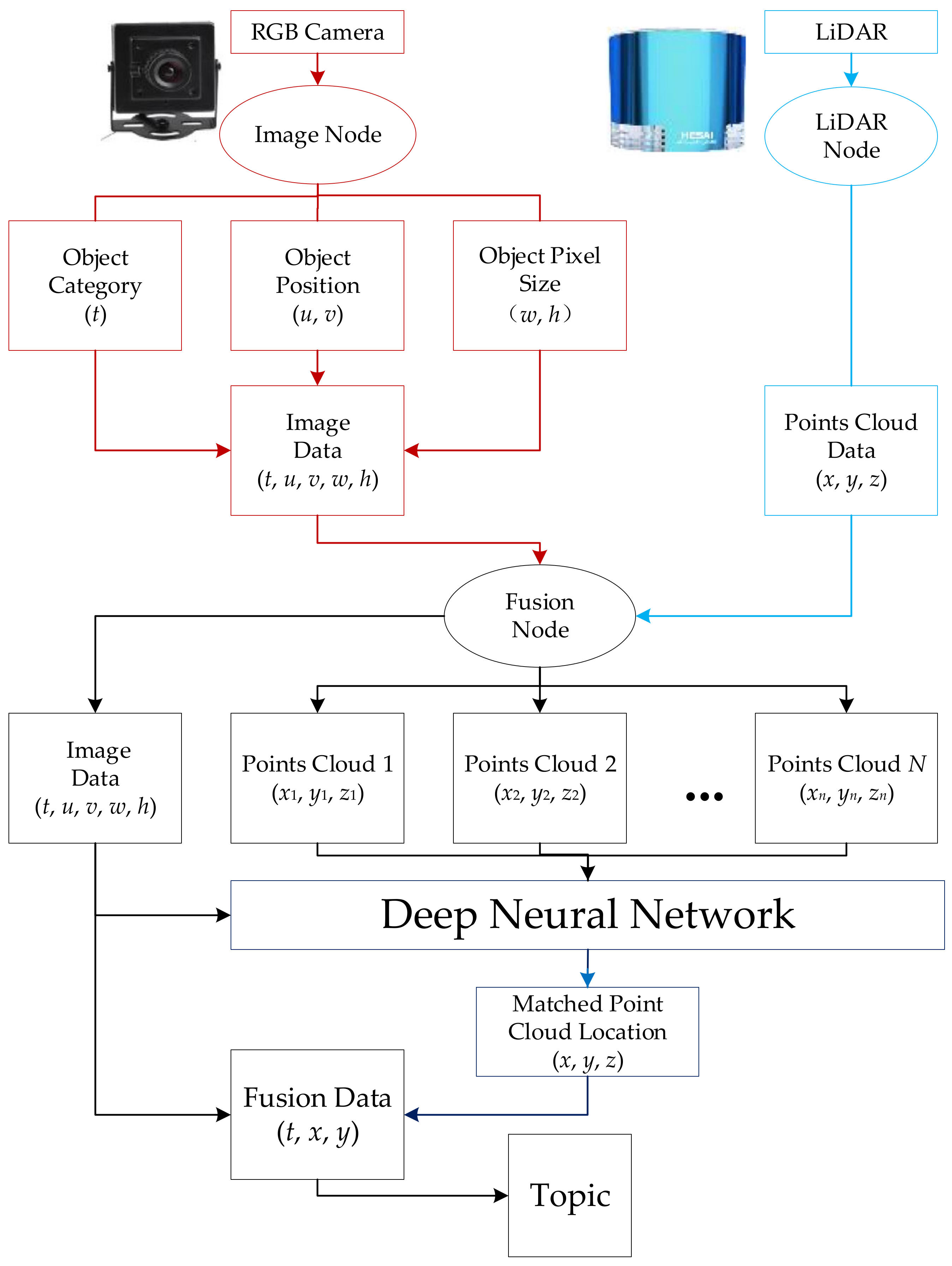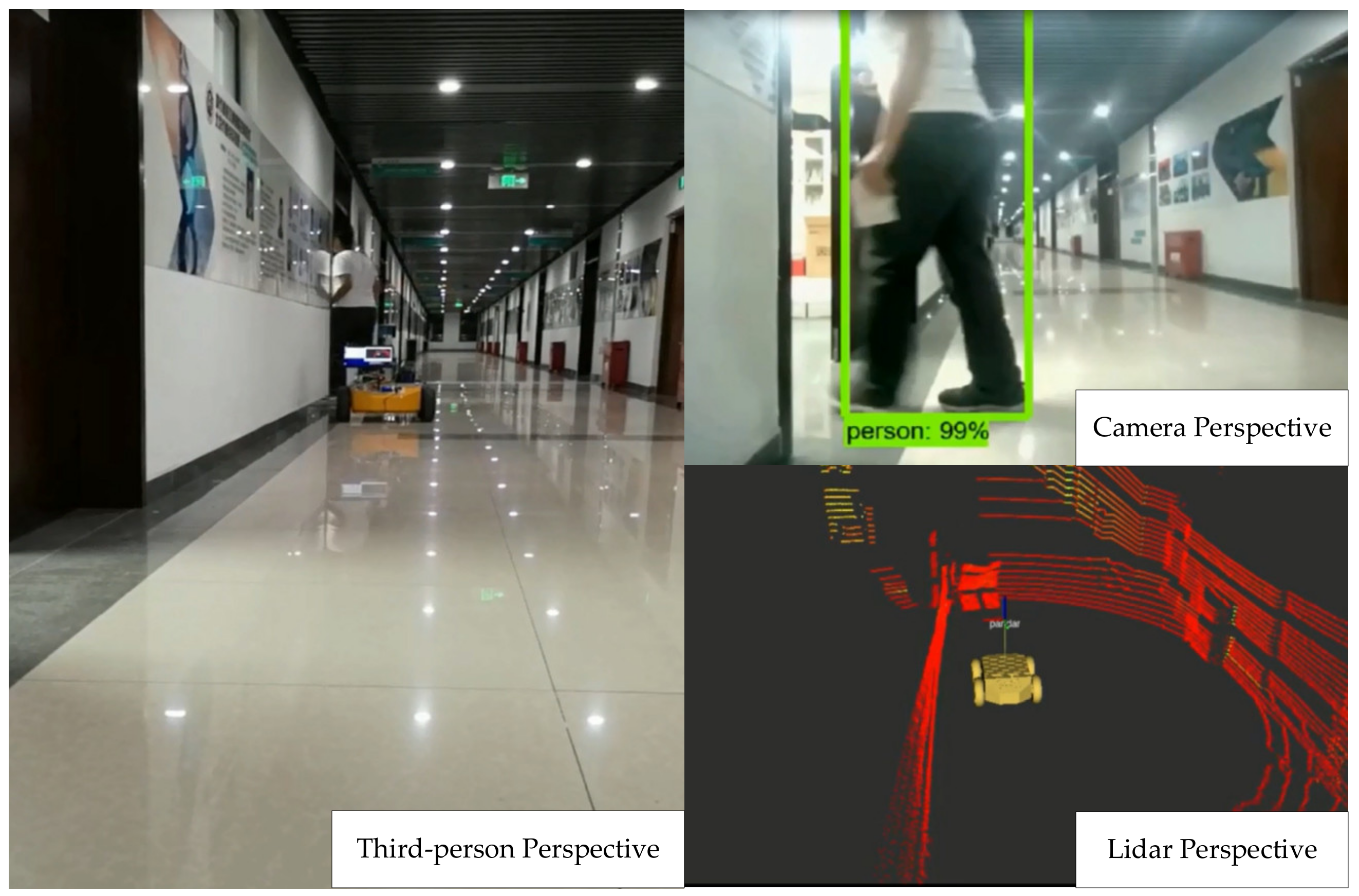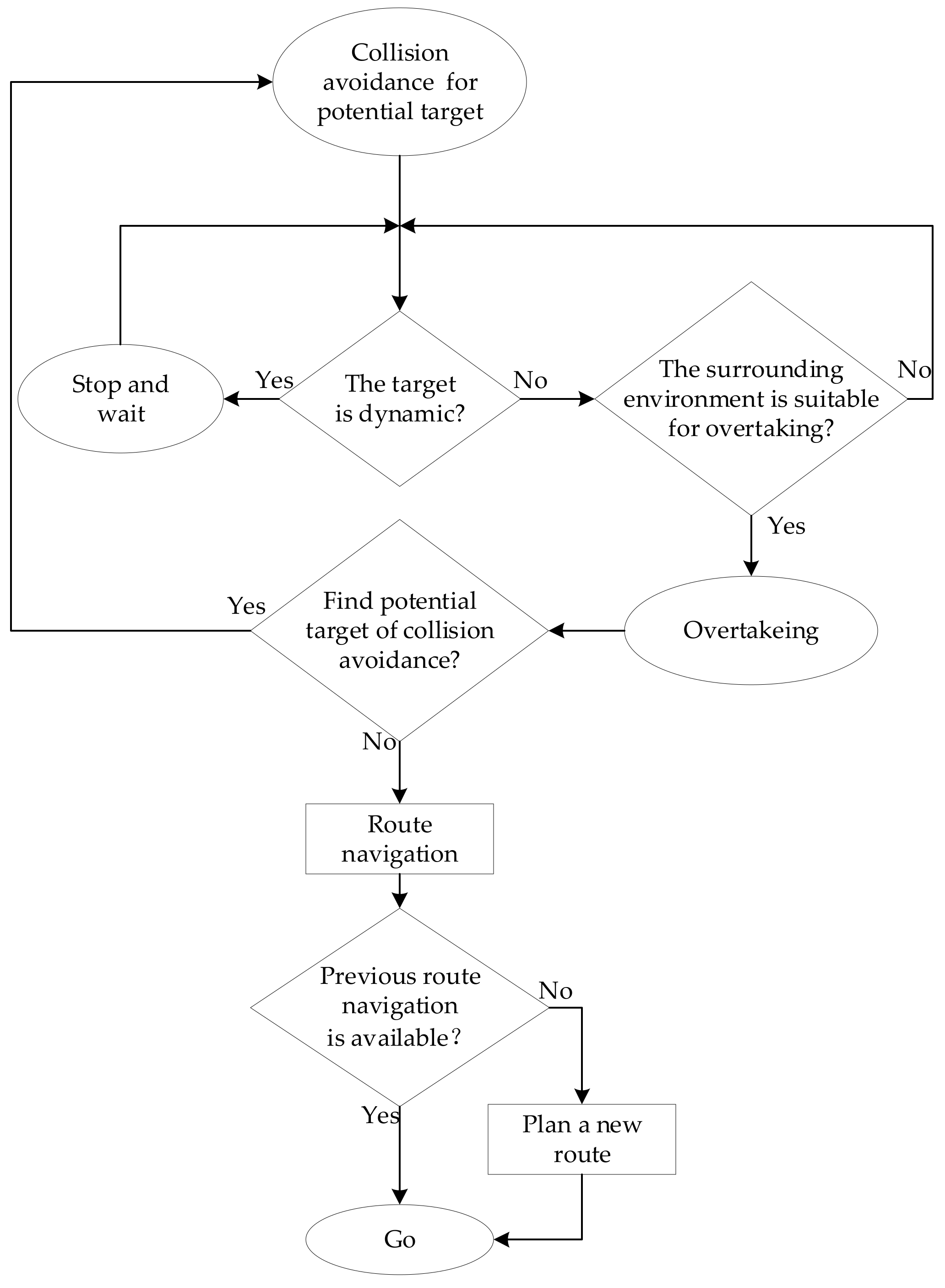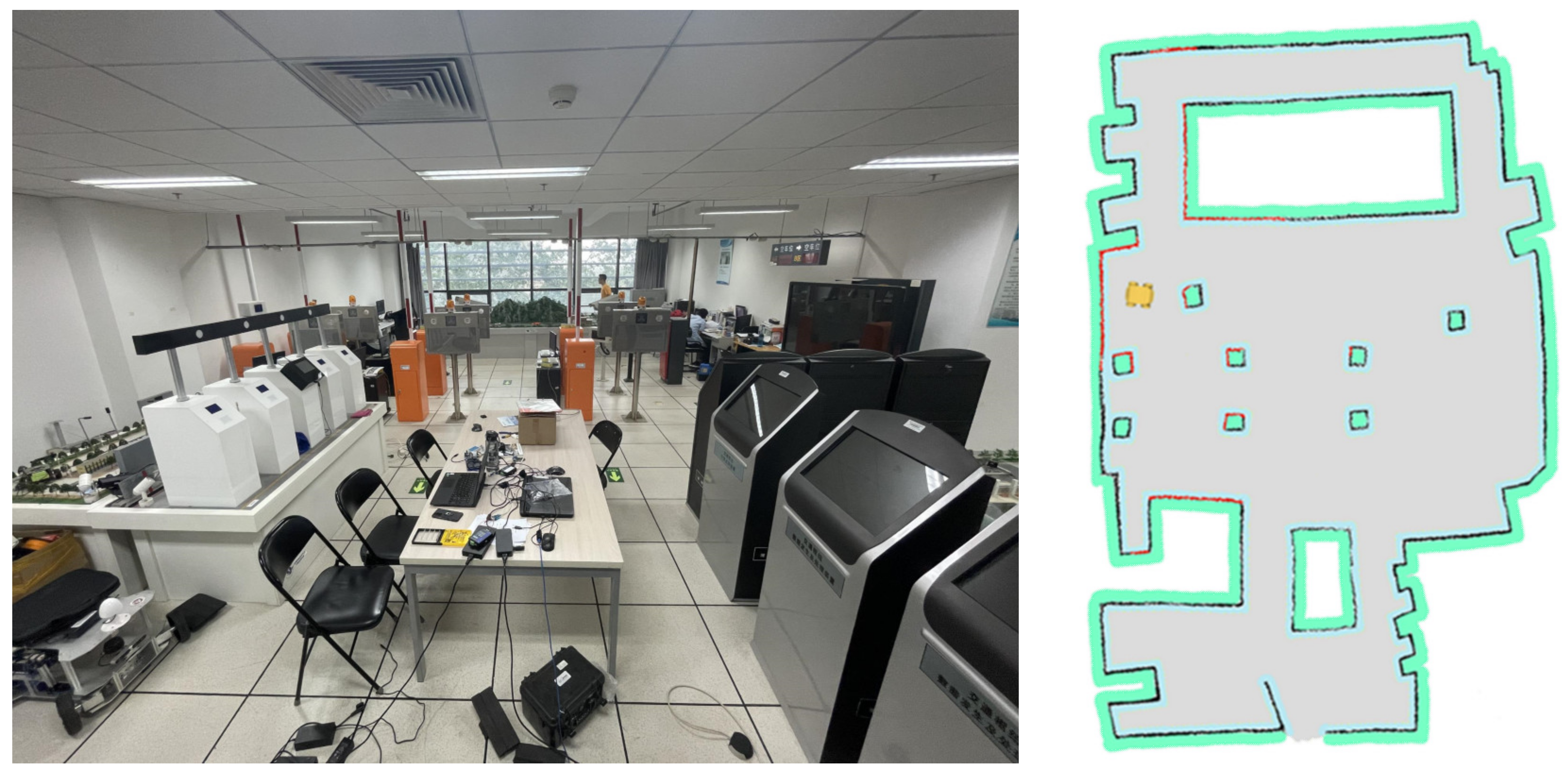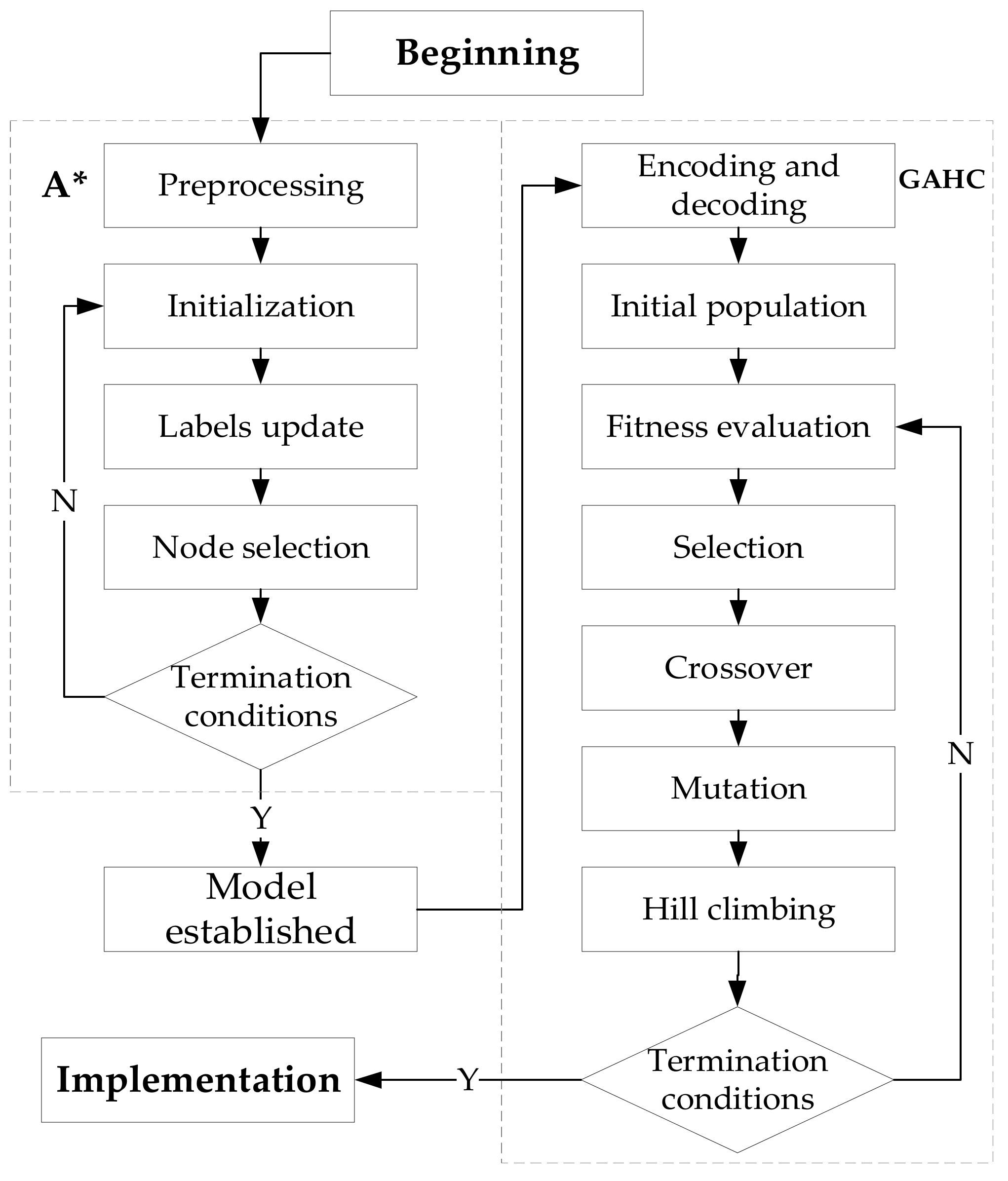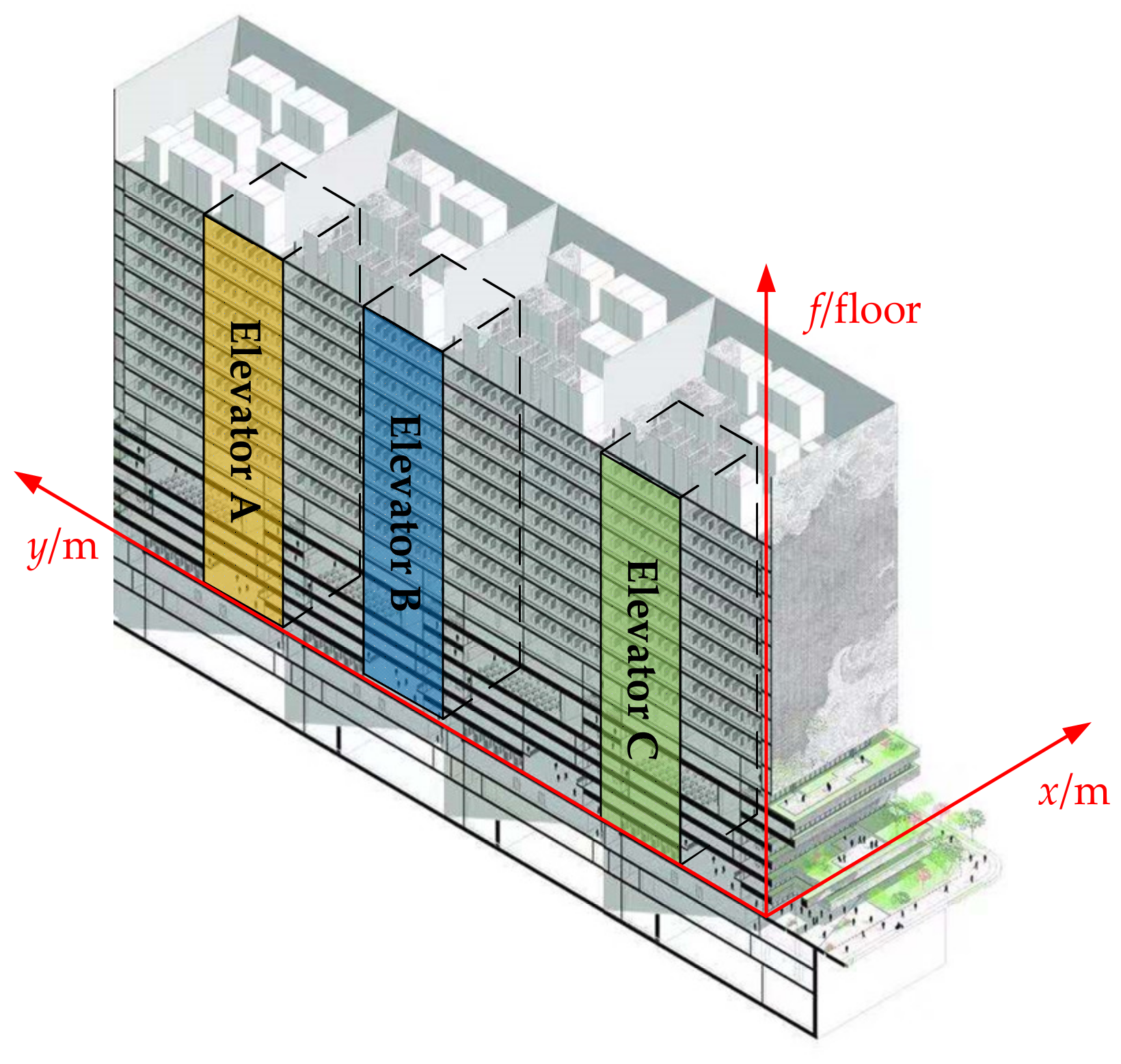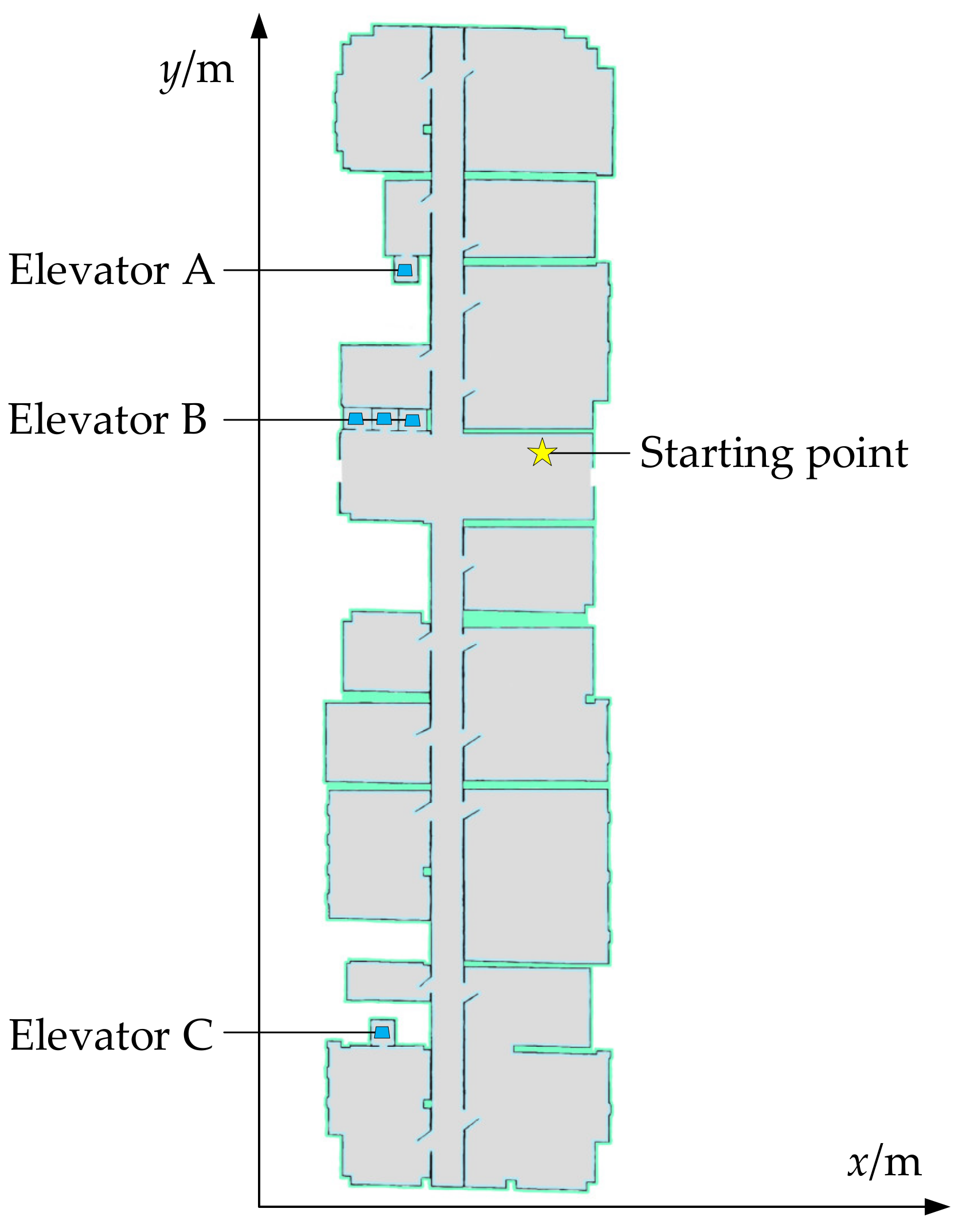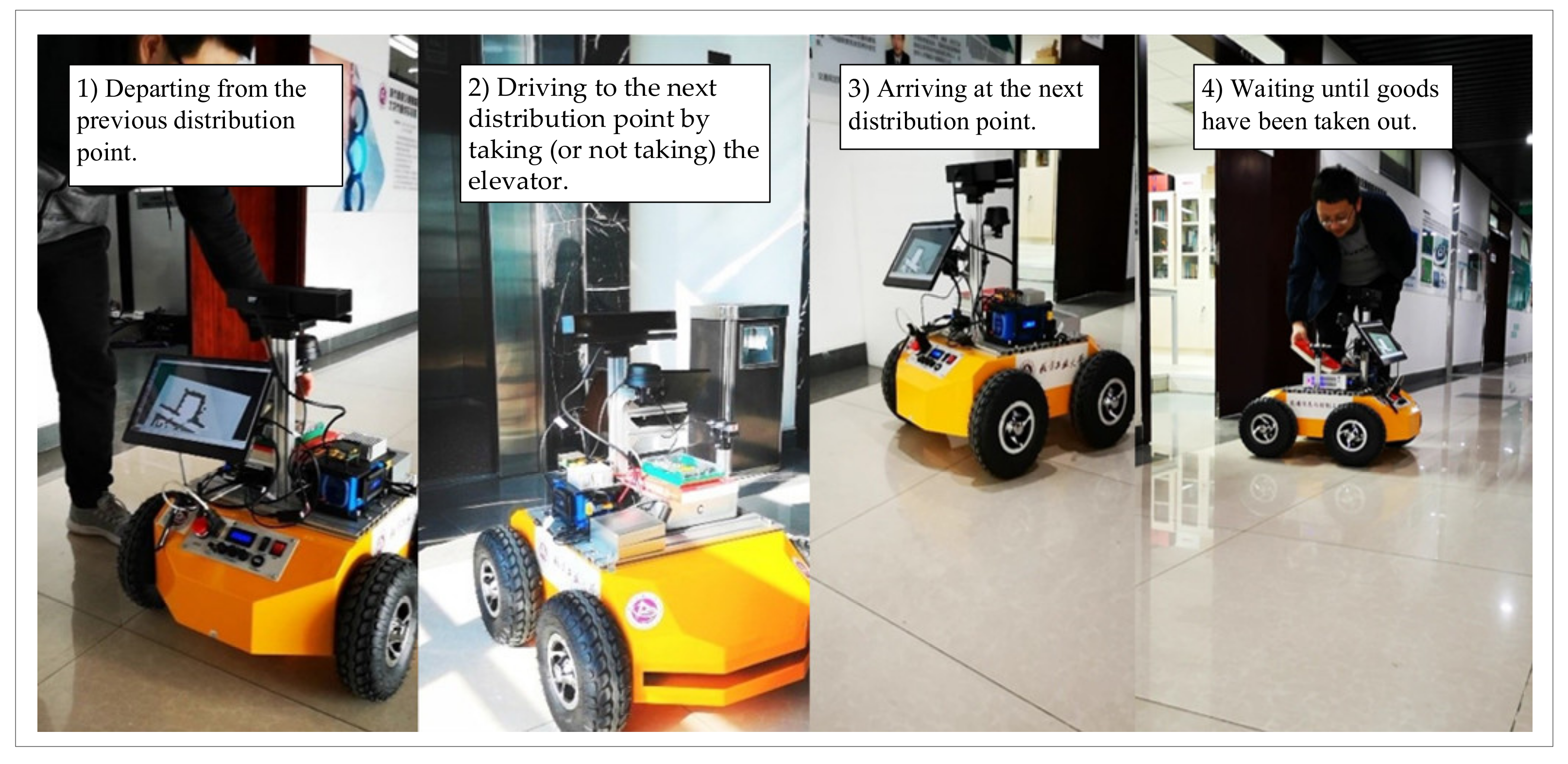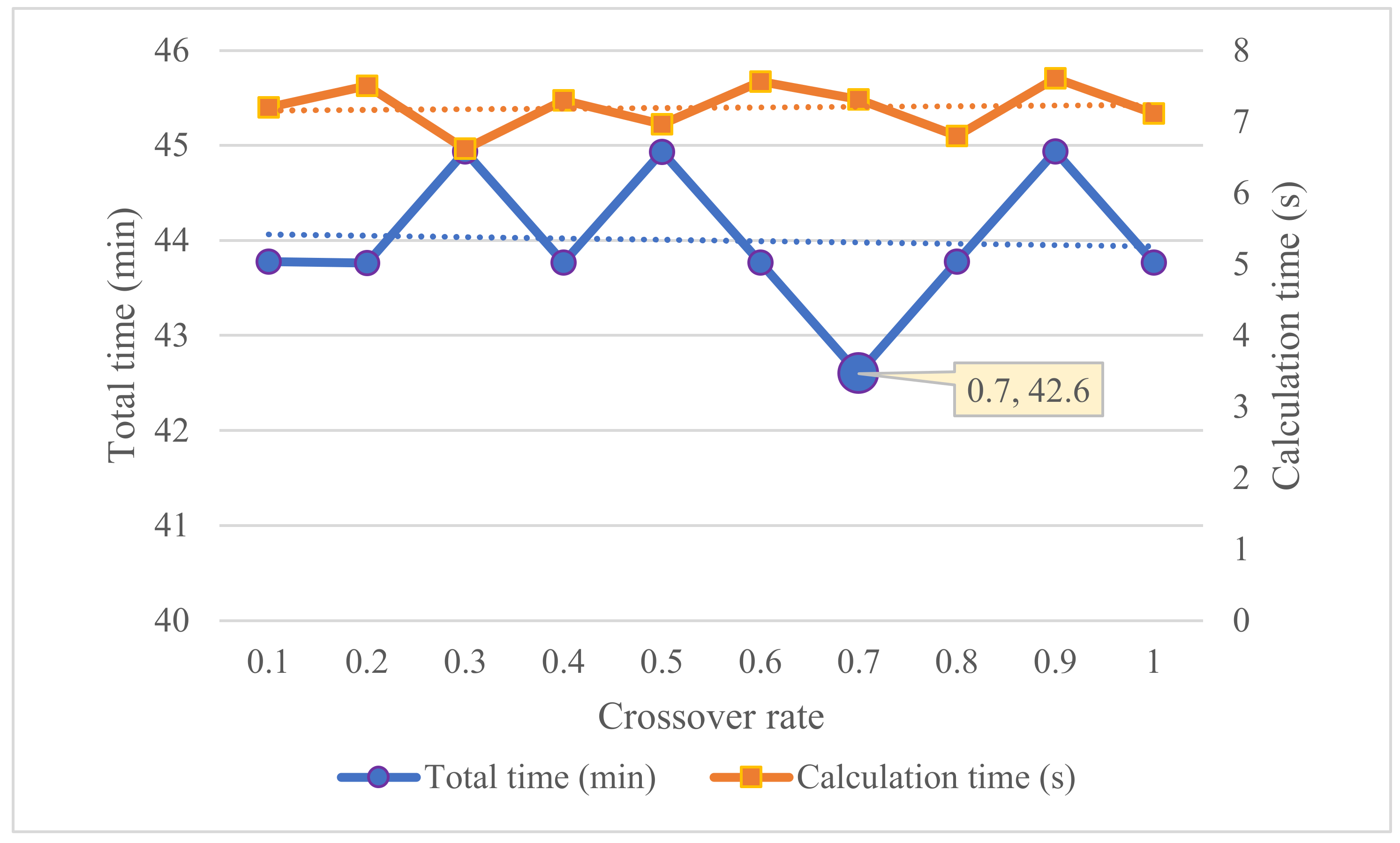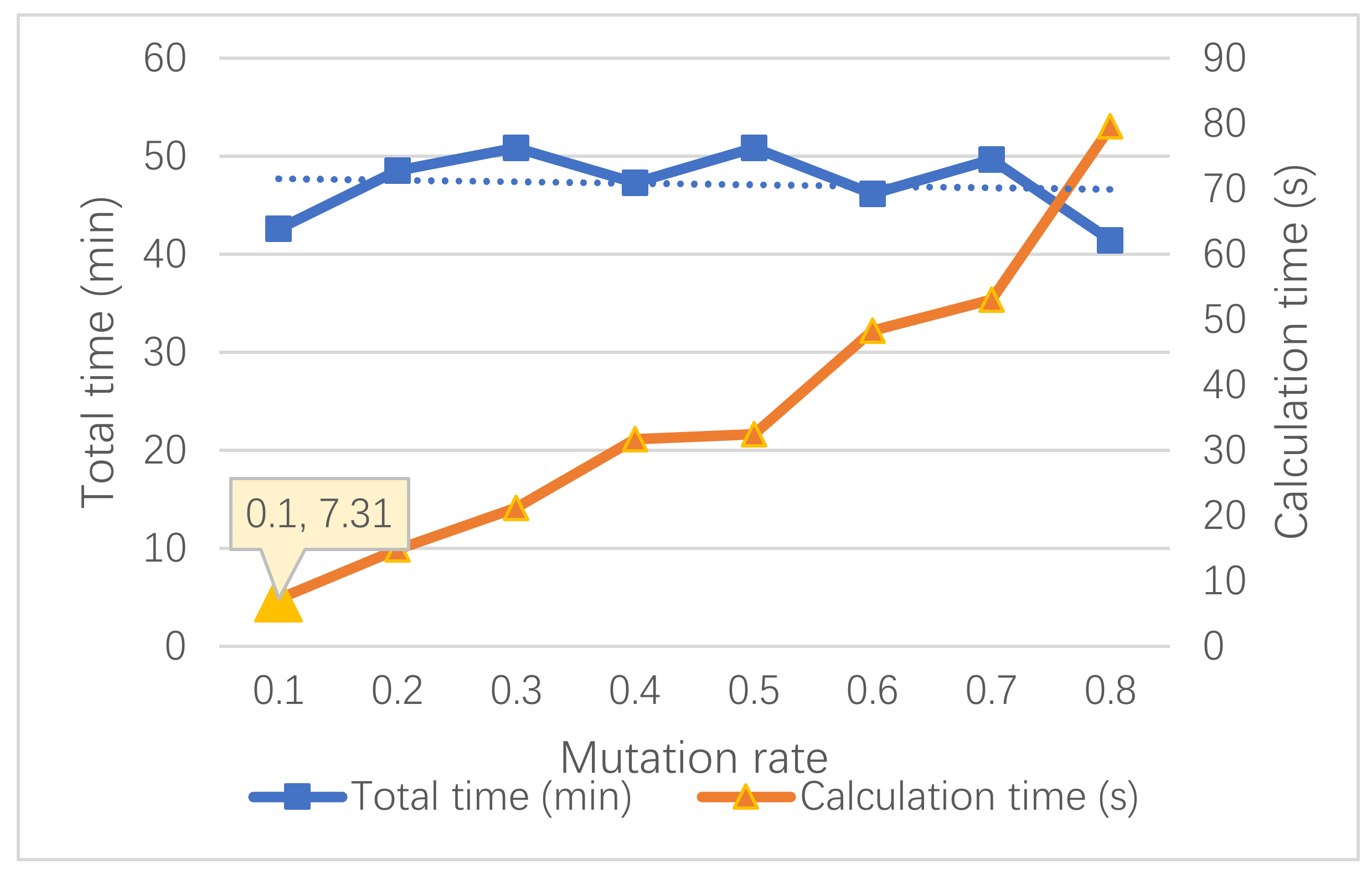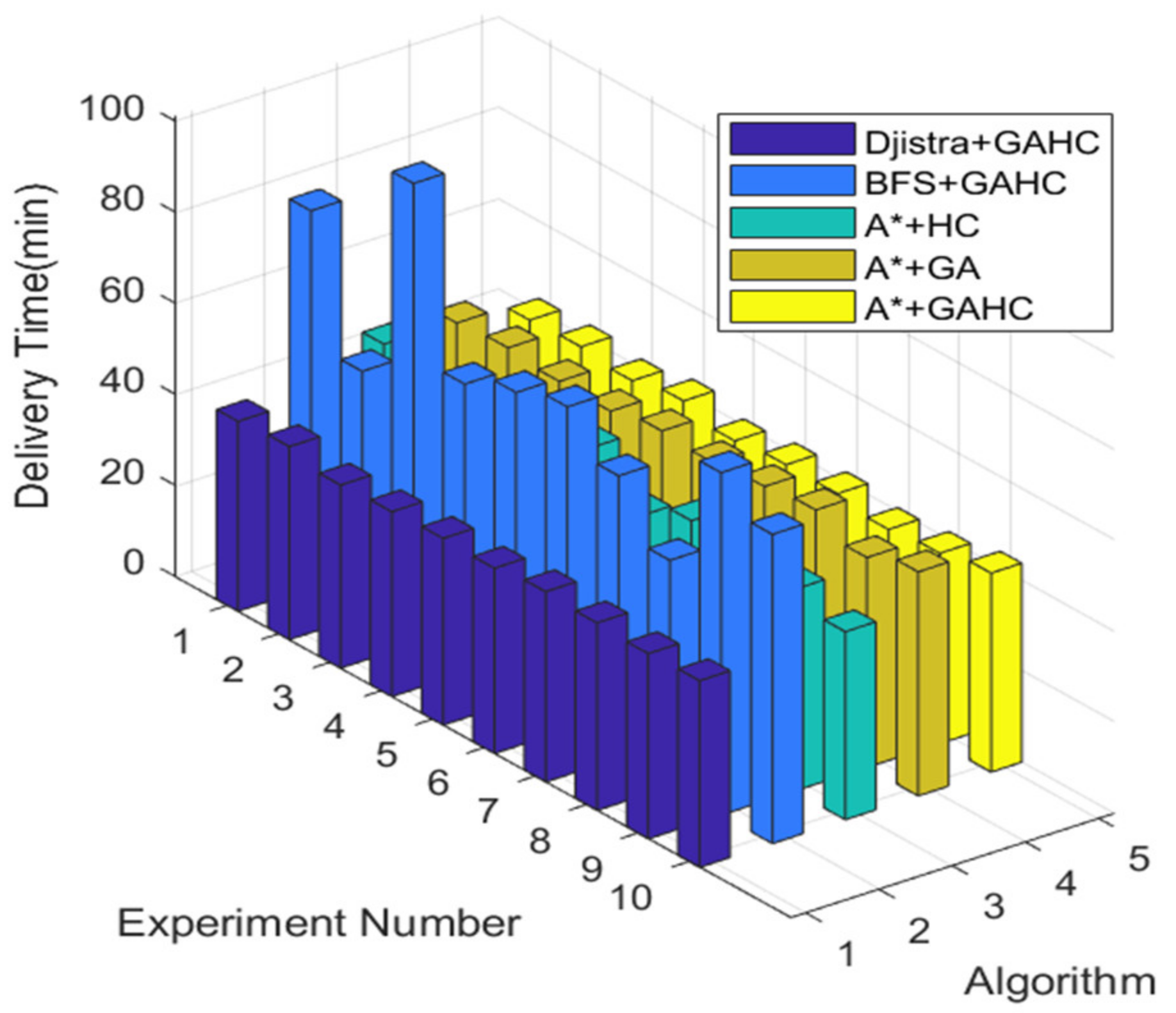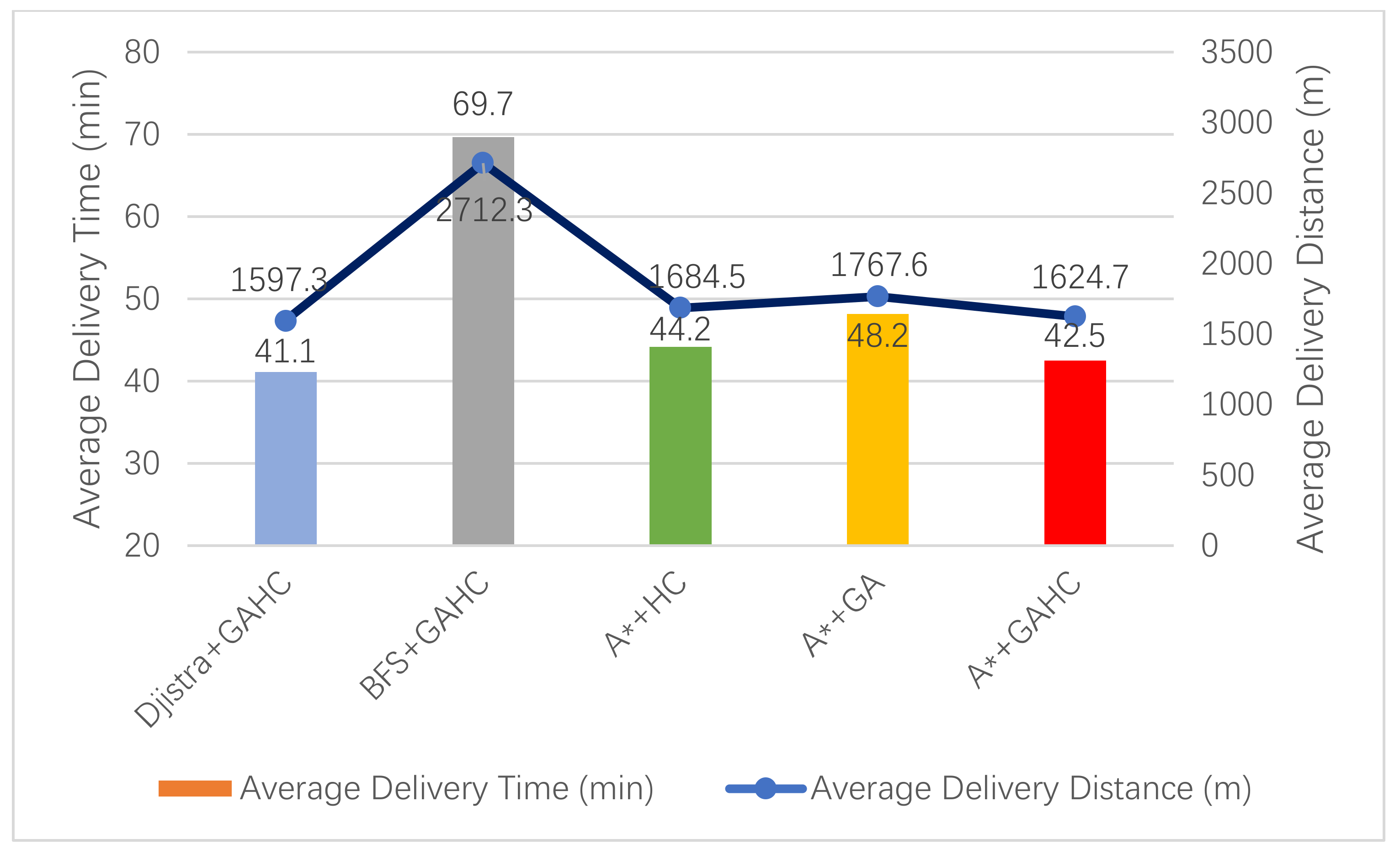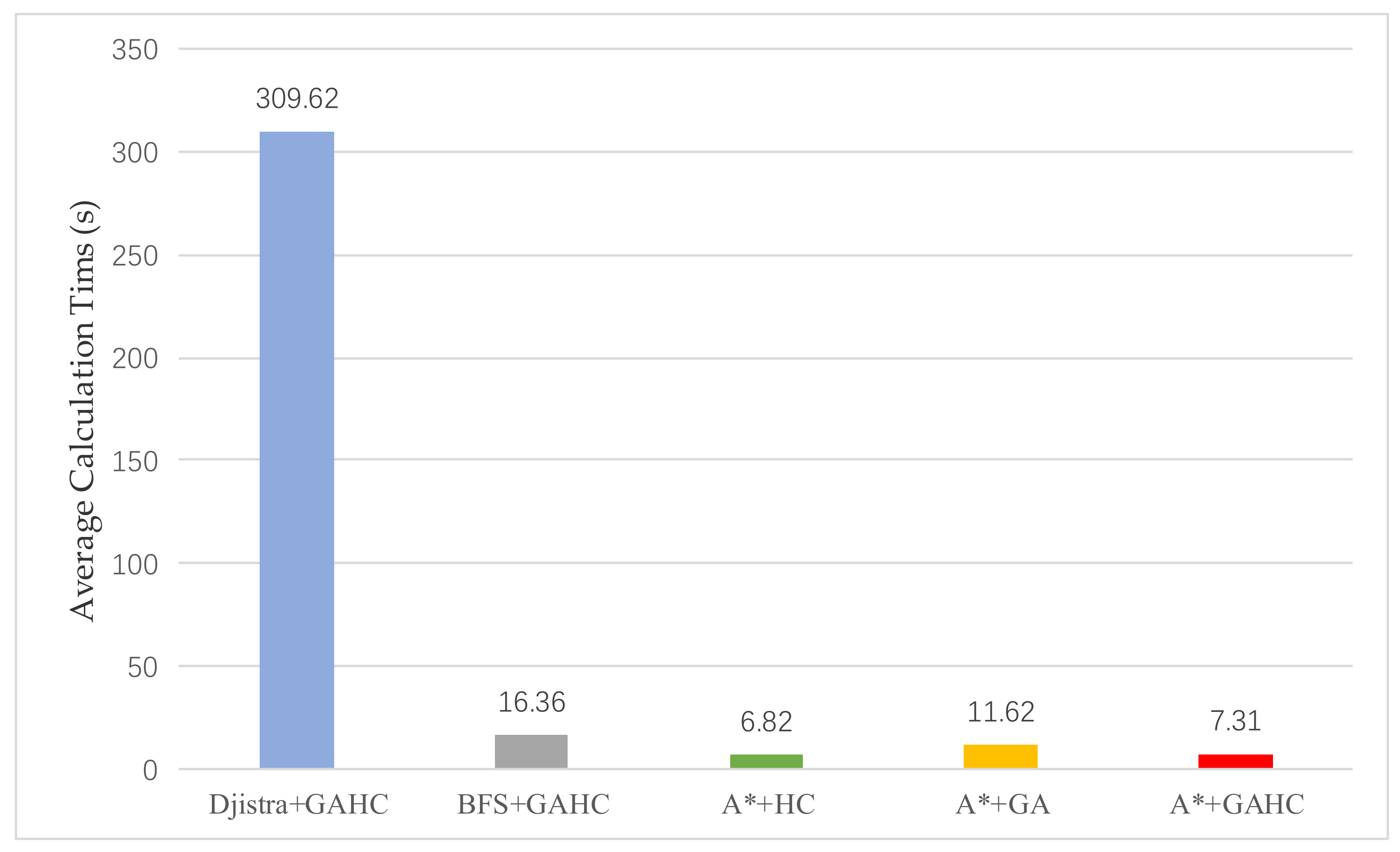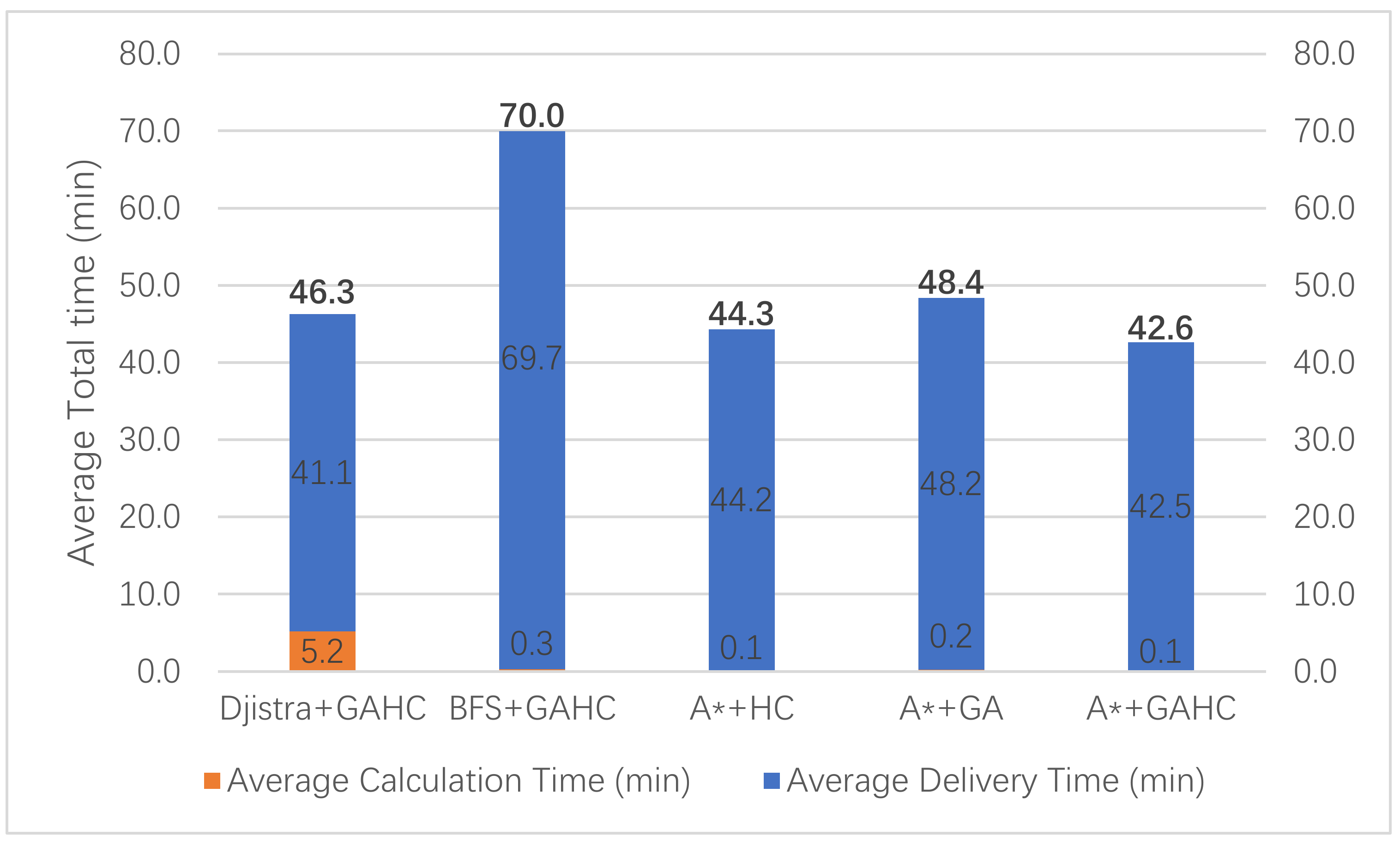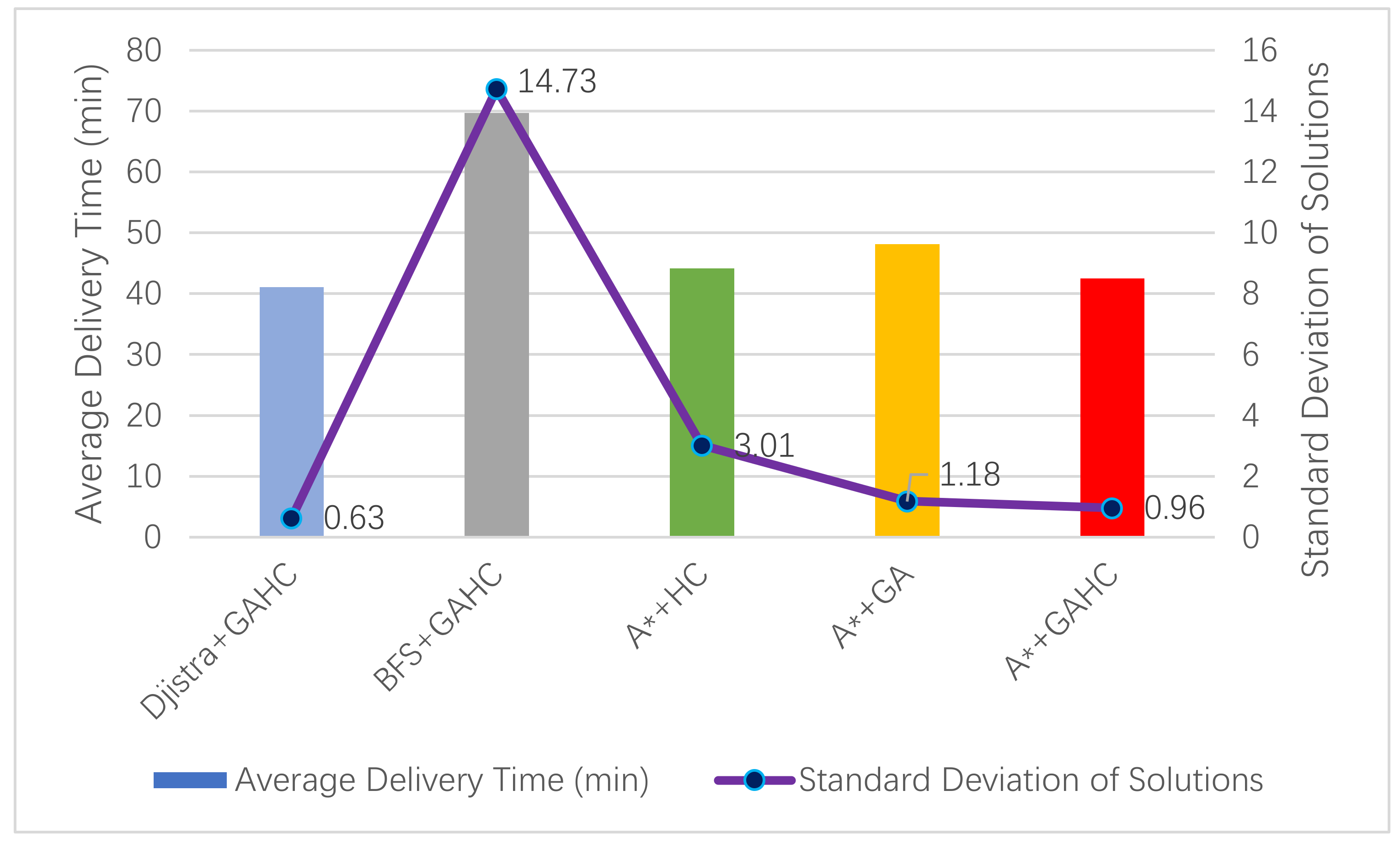1. Introduction
Modern logistics technology, as one of most significant measures in intelligent transportation systems (ITS), can significantly improve the efficiency of package delivery and reduce the cost of logistics systems. It is inevitable that indoor logistics consume too much time on work such as documents, package and device delivery, etc. Therefore, wheeled autonomous actuators, described in this paper, provide an effective technological foundation in an indoor logistics system across different floors in order to improve the logistics efficiency.
In logistics distribution system, the functions of data fusion and route planning are mainly realized based on a robot operating system (ROS), which is a stable and reliable collaborative technology designed for the Stanford artificial intelligence robot (STAIR) project led by the Artificial Intelligence Laboratory at Stanford University (CA, USA), and the Personal Robotics Program of Willow Garage [
1]. This advanced technology is suitable for complex scenarios of multiple nodes and multiple tasks in logistics systems. For the characteristics of ROS, increasing attention has been focused on self-location and route planning for logistics mobile robots.
To improve self-location accuracy, the localization algorithms of indoor robots were developed from traditional GPS to simultaneous localization and mapping (SLAM) algorithm based on multiple sensors [
2]. Raible et al. [
3] developed a low-cost differential GPS system which is suited for mobile robotics applications. The system enhanced positioning accuracy compared with a single receiver system. However, the signal of GPS would be shielded by buildings if a receiver is located in an indoor environment. Khaliq et al. [
4] built a global navigation gradient map on a floor with 1500 embedded radio frequency identification devices (RFID) to solve global path planning problems. This paper verified the validity of the method through three cases. However, the construction of the specific map required a lot of time and outlay, which is most challenging for promoting this method to a wide range of applications. With the development of concurrent mapping and localization (CML), the SLAM algorithm can be applied by vision. Davison et al. [
5] proposed a method of building a real-time 3D scene based on the single-camera SLAM with a wide-angle lens. This paper demonstrated the implementation of a real-time (30 frames per second), fully 3D SLAM algorithm through a hand-held wide-angle camera. However, the visual SLAM algorithm needed a lot of computing resources, and it was difficult to judge the distance. Blanco [
6] proposed a measurement that applied Rao–Blackwellized particle filters (RBPFs) to SLAM by simultaneously considering the uncertainty of the path and map. Rajam and Roopsingh [
7] discussed the application effect of Gmapping and Cartographer on the SLAM algorithm of lidar, which was applied to optimize the parameters of 2D lidar to reflect the SLAM impact. Vlaminck et al. [
8] proposed a complete 3D lidar points cloud data closed-loop detection and correction system. A novel matching algorithm with the global points cloud data was proven to improve the efficiency of the existing technology and the graphics processing unit (GPU) operation speed by 2–4 times.
In the problem of the shortest path planning, the Dijkstra algorithm, as the basis of routing planning method, can accurately calculate the path by searching a large number of nodes [
9]. However, high complexity and difficulties impede the usage of the Dijkstra algorithm. Barzdins et al. [
10] proposed a bi-directional Dijkstra algorithm with the characteristics of biontic search, which was nearly three times faster than the standard Dijkstra algorithm. Sierra [
11] adopted the best first search algorithm (BFS) for the shortest path problem. BFS, as a greedy algorithm, could find the target path the fastest in a simple environment. DuchoĖ et al. [
12] designed a route planning based on a modified A* algorithm for a logistics environment. A* algorithm, combined with Dijkstra algorithm and BFS algorithm, can guarantee the rapidity and accuracy of the shortest path problem. However, for physical distribution problems, a target was often replaced by a series of targets, and the increase in distribution order would upgrade the problem to a nondeterministic polynomial (NP) problem. Therefore, several kinds of bionic optimization algorithms were proposed to solve the multi-task problems. Chedjou and Kyamakya [
13] proposed a dynamic shortest path algorithm based on neural networks. In this research, a model based on a recurrent neural network (RNN) was constructed and solved by dynamic neural networks (DNNs), which was proven to be efficient, robust and convergent by experiments. Elhoseny et al. [
14] proposed a path planning method for robots in dynamic environments based on genetic algorithms. The computational efficiency of the path was proven to be improved by a Bezier curve. Dewang et al. [
15] proposed a path planning algorithm based on adaptive particle swarm optimization (APSO) for the trajectory design of a robot. In this research, the robot equipped with the path planning algorithm of APSO can quickly identify obstacles and reach the destination.
With self-location and route planning algorithms, several types of research on logistics robots and wheeled actuators were developed over the past decade [
16]. Rosenthal and Veloso [
17] developed an actuator decision-making algorithm to seek help in multiple tasks. Moreover, the effectiveness of the algorithm has been proven in logistics distribution systems. Zhang et al. [
18] proposed a scheduling method which aims to balance the energy consumption and reputation gains based on multi-task requests to unmanned aerial vehicles. Purian and Sadeghian [
19] provided a route planning method based on a colonial competitive algorithm for logistics robots in an unfamiliar scenario. Abdulla et al. [
20] presented a logistics wheeled actuator which can communicate with indoor elevators based on ROS. Bae and Chung [
21] designed a route planning method based on a primal-dual heuristic, by which the travel distances are minimized by heterogeneous actuators. Mosallaeipour et al. [
22] proposed a sequential production matrix for task scheduling in logistics systems. Khosiawan et al. [
23] developed an autonomous actuator in indoor circumstances, where a differential evolution particle algorithm was used to solve the multi-task delivery problems.
In summary, current logistics distribution systems are still lacking indoor distribution research considering multi-point and multi-floor route planning for flexible delivery. Therefore, the integrated logistics actuator with a novel route planning algorithm is investigated in this study.
The rest of this paper is organized as follows. In the next section, an autonomous actuator based on ROS for the indoor logistics system is designed. The indoor route planning algorithm is then formulated based on multi-sensor fusion. Finally, the intelligent indoor logistics system is tested in a real scenario. Through the final results, conclusions are summarized and future research directions are proposed.
3. Results and Discussion
In this section, a typical business building Boyuan in North China University of Technology, Shijingshan District, Beijing, China, is selected as a real scenario to test the logistics system. The building consists of 11 floors with 300 rooms. A 3D coordinate system for the typical office building is established, as shown in
Figure 9, where
x and
y are coordinates of plane positions and
f is the floor coordinate. The origin of the coordinate system is set at the southwest corner of the building, which can ensure that all targets are positive in the coordinate system. The logistics center, with the coordinates (28.7, 55.2, 1), is set at the gate of the building, which is shown in
Figure 10. The waiting time for customers to pick up the goods from the target is not included in the total distribution time. The intelligent elevator can be called to the designated floor in advance, so the waiting time of the elevator can be ignored.
In the distribution process, the current delivery mass will affect the speed of the actuator. However, limitations of speed at 2 m/s and acceleration at 1.75 m/s
2 for actuator are set due to the risk of pedestrian safety. Therefore, in this actuator, there is enough power to meet the speed demand at full load. The distribution process of the experiment is shown in
Figure 11.
In the experiment, delivery distance, delivery time and calculation time are selected as indexes. To better explain the meaning of experimental process and indexes, a scheme generated by A*+GAHC algorithm is selected as an example. There is one starting point, twenty target points and three sets of elevators in the example. Firstly, the delivery distance and delivery time between each two points of twenty-one points are calculated by A* algorithm. If they are on different floors, the delivery distance and delivery time of three different elevators to the target are calculated, which obtained a total of 584 pairs of data. Then, the distribution scheme is solved by the GAHC algorithm, which includes three delivery routes: “0-1-7-5-14-8-6-0”, “0-17-11-18-4-3-20-13-0” and “0-12-16-15-2-19-10-0”. Taking “0-1-7-5-14-8-6-0” as an example, the actuator departs from the starting point, delivers the targets numbered 1, 7, 5, 14, 8 and 6, and returns to the starting point. The calculation time is the time required to generate the scheme read by the timer. Finally, after distribution, the total distance and total time of distribution are obtained by reading the data of the odometer and timer.
Crossover rate and mutation rate, as the critical parameters of GA, affect the experimental results. Therefore, we try to explore the optimal values of them for the better performance. With the same scenes and targets, crossover rate is set up from 0.1 to 1.0, and mutation rate is defined as 0.1. The experimental results are shown in
Table 1 and
Figure 12.
As shown in
Table 1 and
Figure 12, the total delivery time fluctuates along with the change of crossover rate. It is obvious that when the cross rate is set up as 0.7, the delivery has the minimum of the total time. However, it has little effect for crossover rate on the calculation time of the GA. Because the crossover operation is of a significant concern to genetic operations, a crossover rate causing a major effect on the calculation time should be selected. Therefore, crossover rate 0.7 is selected for the experiment.
Similarly, mutation rate ranges from 0.1 to 1.0, and crossover rate is set as 0.7. The total delivery time and the calculation time are shown in
Table 2 and
Figure 13.
As shown in
Table 2 and
Figure 13, when mutation rate is set up within the range from 0.1 to 0.7, the total delivery time shows an upward trend, along with an increase in mutation rate. When mutation rate is set up to 0.8, the delivery time witnesses a downward trend. Moreover, the calculation time increases linearly with the increase in mutation rate. A higher mutation rate means that the algorithm tends to perform random searches. Therefore, in this paper, setting mutation rate to 0.1 is rational for the quality of the solution.
In order to realize indoor route planning based on SLAM rapidly, parameters of the algorithm are selected in
Table 3, and the corresponding parameters to the targets are shown in
Table 4.
For the purpose of verifying the effectiveness of this proposed algorithm (A*+GAHC), the traditional algorithms Dijkstra (Dijkstra+GAHC), BFS (BFS+GAHC), HC (A*+HC) and GA (A*+GA) are compared in the experiment. The above five algorithms are each tested 10 times, and the delivery times are shown in
Table 5 and
Figure 14.
As shown in
Figure 14, the data of Dijkstra+GAHC, A*+HC, A*+GA and A*+GAHC are relatively stable and different from each other in the same environment and objectives. It should be noted that the data of BFS+GAHC fluctuate greatly. To analyze the experimental data more clearly, the four indexes including average delivery distance, average delivery time, standard deviation of solutions and average calculation time are analyzed. The results are shown in
Table 6.
Time and energy cost are sensitive in logistics actuators. Therefore, the average delivery time and the average delivery distance are firstly selected for analysis. The average delivery time indicates the time cost of the intelligent system, and the average delivery distance reflects the energy cost of the actuator. Moreover, there is a correlation between the average delivery time and the average delivery distance in this experiment, as shown in
Figure 15.
As revealed in
Figure 15, the shortest average delivery time is achieved through Dijkstra+GAHC. The second shortest average delivery time is obtained by A*+GAHC, which is only 3.4% slower than that of Dijkstra+GAHC. It is worth noting that the longest average delivery time is gained by BFS+GAHC. The reasons can be analyzed as follows. Dijkstra+GAHC based on Dijkstra is a greedy strategy, which traverses all potential nodes through breadth first search. Therefore, Dijkstra+GAHC can find the optimal solution more accurately and stably. BFS-based BFS+GAHC can achieve the aim of single fastest delivery due to the tendency of goal orientations. However, BFS+GAHC may become stuck in the bilateral or multilateral traps, which leads to unstable and long delivery times. The A*+GA, A*+HC and A*+GAHC based on A* algorithm can ensure stability and make the solution approach the optimal solution of the problem. Moreover, A*+GA, A*+HC and A*+GAHC still have some differences in solving multi-objective distribution problems: A*+HC can find the optimal solution quickly in local through HC algorithm, A*+GA can analyze the problem globally by GA to ensure the stability of the solution and A*+GAHC combined with HC and GA can ensure the stability and rapidity of the solution, and its average delivery time is closer to the optimal solution than the performance of other algorithms.
Secondly, as an important index in the system, the average calculation time reflects the ability to replan the route for special situations encountered in the distribution process. Before the delivery of the logistics actuator, the system analyzes and calculates the distribution scheme for the environment. Therefore, the lower the index, the higher the robustness of the system. As shown in
Figure 16, Dijkstra+GAHC based on Dijkstra algorithm requires a large amount of computation, which is about 30 times greater than other algorithms because it traverses all potential nodes. BFS+GAHC has a long calculation time for the tendency of the BFS algorithm to the target orientation. A*+GA, A*+HC and A*+GAHC, based on A*, have a relatively stable trend in calculation time. A*+HC based on HC has the fastest calculation time due to the fact that the global situation does not need to be considered. For A*+GA based on GA algorithm, more calculation time is allocated in the global solution process. A*+GAHC, combining HC and GA algorithm, has a strong robustness, and the calculation time is only 7% slower than the fastest delivery time through A*+GA.
In the total distribution process, the average time
T is generally used as a main index, and its calculation equation is as Equation (12):
where
t1 is the average delivery time,
t2 is the average calculation time and
α and
β are the weights related to calculate the average time.
In the process of this experiment, the distribution environment is relatively stable, and there is no need to replan calculation and redistribution. Therefore, the weights are set as Equation (13):
As shown in
Figure 17, the average time in Dijkstra+GAHC even surpasses the average time in A*+HC or A*+GAHC because it increases the calculation time. Compared with other algorithms, A*+GAHC proposed in this paper has an advantage of 22.7% in reducing average total time cost.
Thirdly, the standard deviation of solutions displays the stability of the algorithms. As shown in
Figure 18, Dijkstra+GAHC has the strongest stability because it traverses all potential nodes. Due to the greed tendency, and the standard deviation in BFS+GAHC is generally higher than other algorithms. The algorithm A*+GAHC, combining GA and HC, has the smallest standard deviation and strong stability.
Five algorithms in the experiment have distinct characteristics. Moreover, these different characteristics in environments affect the experimental results to some extent, which is shown in
Table 7.
Therefore, the following conclusions can be drawn from the above experimental analysis:
- (1)
Dijkstra+GAHC has a strong analysis ability both locally and globally and can find the optimal solution in multi-objective distribution tasks. However, a large amount of data and long calculation times in the analysis of Dijkstra lead to poor robustness and long total time.
- (2)
BFS+GAHC has the fastest single delivery time, but it takes a long time for calculation and has the poorest stability due to the randomness of the BFS algorithm.
- (3)
A*+HC and A*+GA are near-optimal solutions in delivery time and can ensure shorter calculation times and strong stabilities at the same time. However, A*+HC, based on the local solving ability of the HC algorithm, still has some shortcomings in the multi-objective distribution problems. Similarly, A*+GA, based on the global solving ability of the GA algorithm, has the weakness of a long calculation time.
- (4)
A*+GAHC proposed in this paper makes the delivery time approach the optimal solution through the A* algorithm, while ensuring less calculation time and a strong stability. Moreover, in multi-objective distribution problems, the integration of the HC and GA algorithms places the logistics system in an efficient and stable state.
